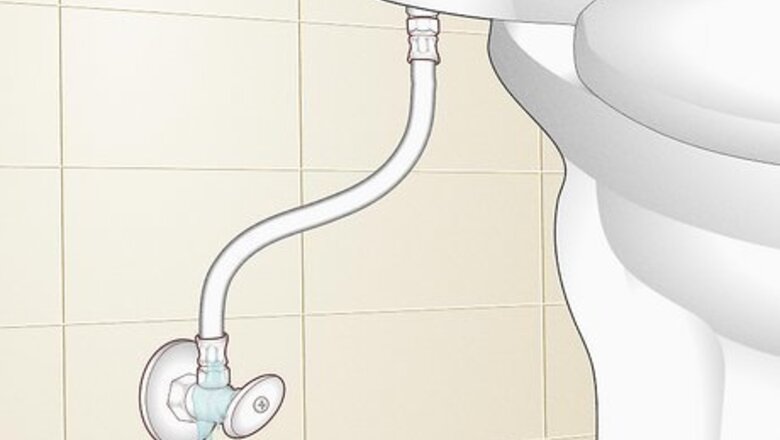
views
X
Trustworthy Source
United States Environmental Protection Agency
Independent U.S. government agency responsible for promoting safe environmental practices
Go to source
A leaky toilet supply line may seem alarming, but don’t call a plumber just yet. Toilet supply lines are relatively easy to fix. In this article, we’ll help you find the source of the leak if you haven’t already, and then show you how to fix the supply line (or replace it completely) to stop the leak.
Finding the Source of the Leak
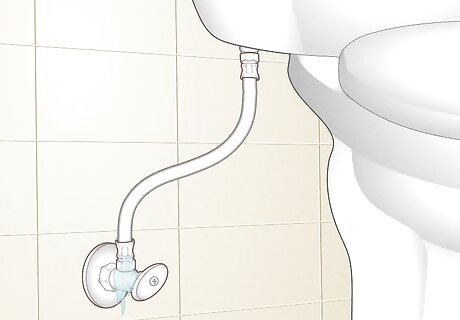
Examine the supply line to see where the leak is coming from. Look to see if the water is coming from the fittings of the supply line, or a hole in the supply line. Try to find a place where water is dripping or spilling out. Finding puddles or damp areas around the supply line, such as on the floor or walls, can also help you determine the source of the leak.
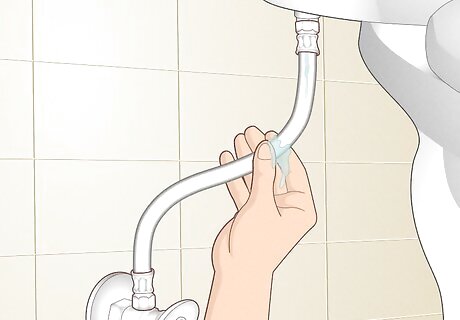
Run your hand along the supply line if you can’t see the leak. If you can’t tell where the leak is just by looking, try running your hand along the supply line to feel for leaks. Try to find areas either on the supply line or on the fittings on either end for areas where water is pushing or dripping out.
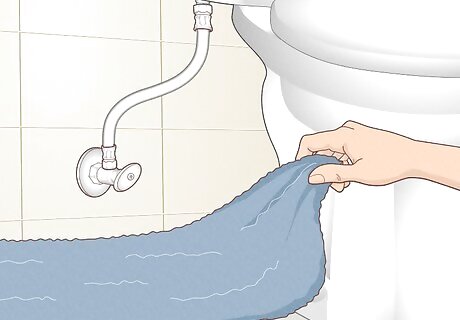
Put towels down once you’ve found the source of the leak. This will help absorb leaking water while you work on fixing the leak. On the off chance that you end up with more water leaking out, you will definitely want to clean that up before the floor gets slippery. Consider drying the supply line, walls, and other wet areas. If you leave water sitting on the floor, it could also cause mold to grow in your bathroom over time. Mold can cause health risks.
Fixing the Supply Line
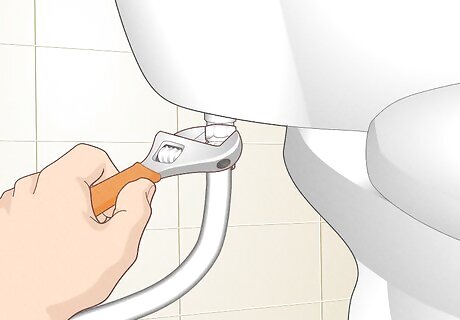
Tighten the fitting connecting the supply line to the toilet. Screw in the nut between the supply line and the toilet by hand, then use a wrench to do an additional quarter of a turn. You do not want to tighten the nuts too much, or you might strip their threads and damage them. Be sure to turn it to the left. Remember: Righty tighty, lefty loosey!
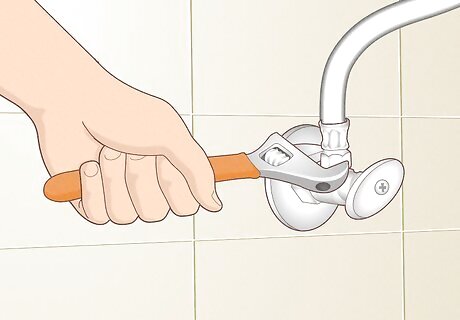
Tighten the other fitting, connected to the supply valve. This is the part that connects to the wall. There should be a nut just above the valve that connects the supply line to the wall. Just like with the other fitting, tighten it by hand, then use a wrench to do an additional quarter of a turn.
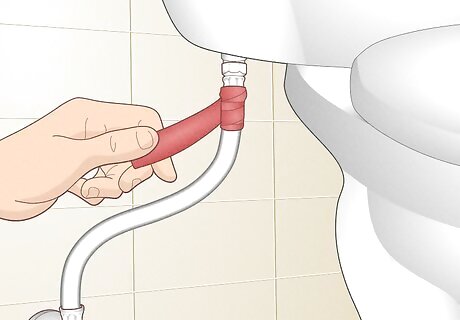
Patch holes with plumber’s tape. Plumber’s tape is a sturdy, water-resistant kind of tape made specifically to fix plumbing. You can find it at your local hardware store. If the leak is coming from the ends of the supply line, turn the water supply valve on the wall off, flush the toilet to empty it out, then carefully unscrew the supply line and wrap some plumber’s tape firmly around the threads of the fittings on each end. Press the ends of the tape into the threads so that they don’t stick out. Try wrapping the plumber’s tape around the supply line or fittings a few times if you want to make the tape extra secure. If the leak is coming from a hole in the supply line itself, try wrapping plumber’s tape, duct tape, or electrical tape around the supply line to patch the hole up.
Replacing the Supply Line
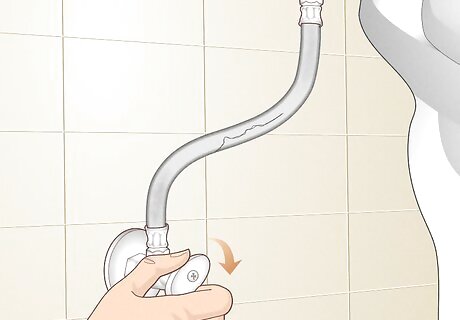
Shut off the toilet water supply. Turn the water supply valve, which is where the water supply line connects to the wall, all the way to the right (clockwise). Flush the toilet to empty out the tank. You can also use a cup to empty out smaller amounts of water left in the tank, and a sponge to soak up residual amounts of water.
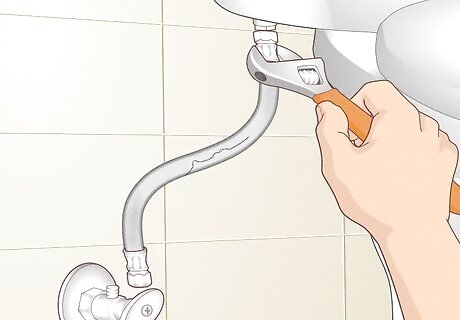
Unscrew the supply line. Use a crescent wrench to unscrew the nuts connecting the supply line to the toilet and the supply valve and check the ring and the seal. Remove the supply line from its place. Warning: Be a little careful when lifting the supply line out of place, as you don’t want to damage the places where it screws onto the supply valve and the toilet.
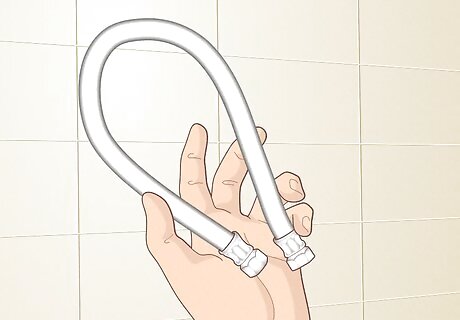
Purchase a new supply line. Check the plumbing section of your local hardware store for replacement toilet supply lines. Purchase one that matches your old one in length and size. Tip: Bring the old supply line with you to easily compare it to the new ones. If you aren’t sure which supply line matches your old one, ask an employee for help.
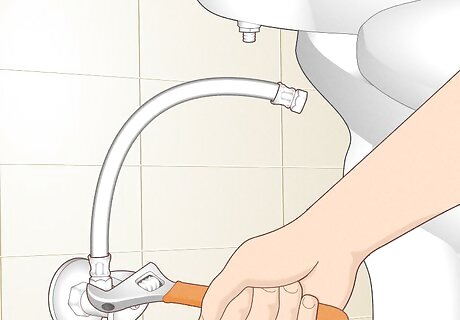
Screw the new supply line into place. Screw one fitting of the new supply line into the screw on the toilet, and the other one into the screw above the water supply valve. You can screw the fittings on by hand, or with a wrench if necessary. Just don’t screw them in too tight. Once again, you don’t want to strip the threads. Tip: If your new supply line came with a tag displaying the dimensions of the supply line, consider leaving the tag on. This will make it easier to find the right supply line the next time you need to replace it.
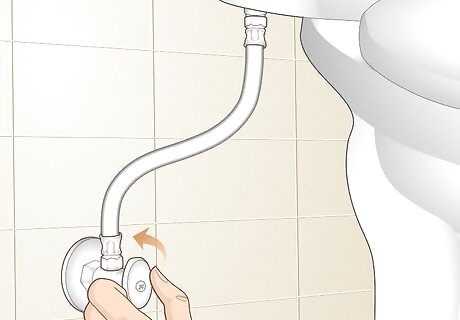
Turn on the water supply. Turn the water supply valve all the way to the left (counterclockwise) to get the water running again. Make sure that the new supply line is not leaking. If not, you’re done! Toilet supply lines usually last for about 10 years. If the new supply line leaks, you might not have tightened it enough, the new supply line may be defective, or there may be a problem with another component of the toilet. Call a professional for help.

















Comments
0 comment